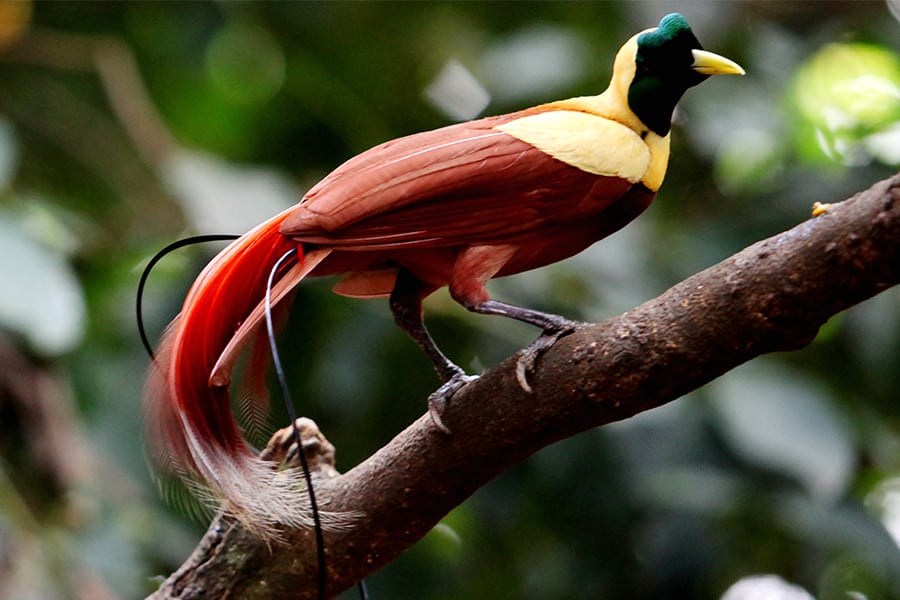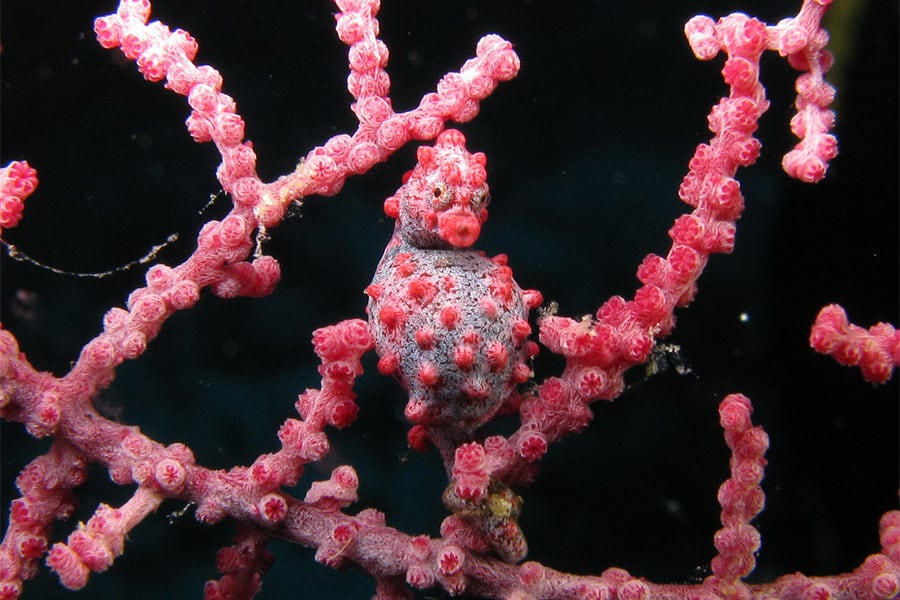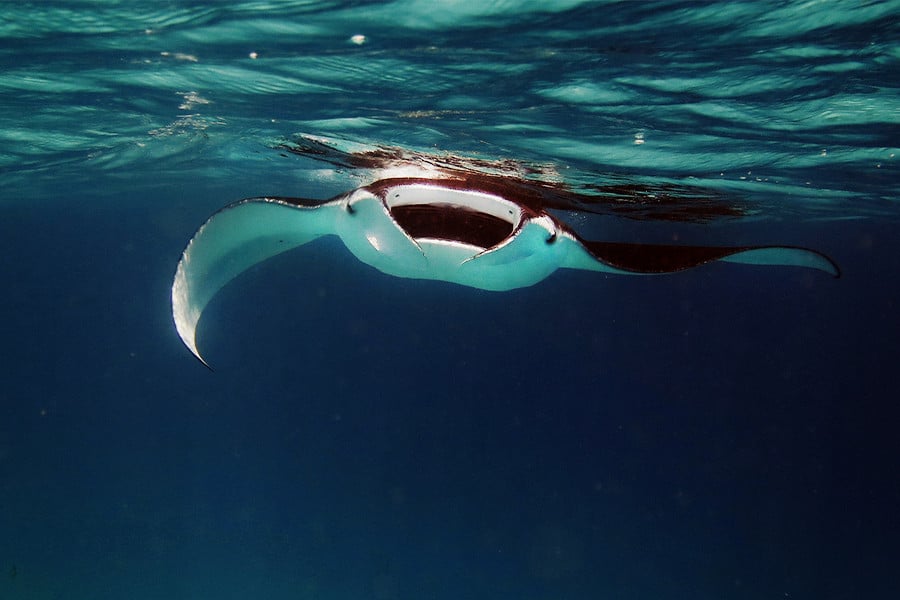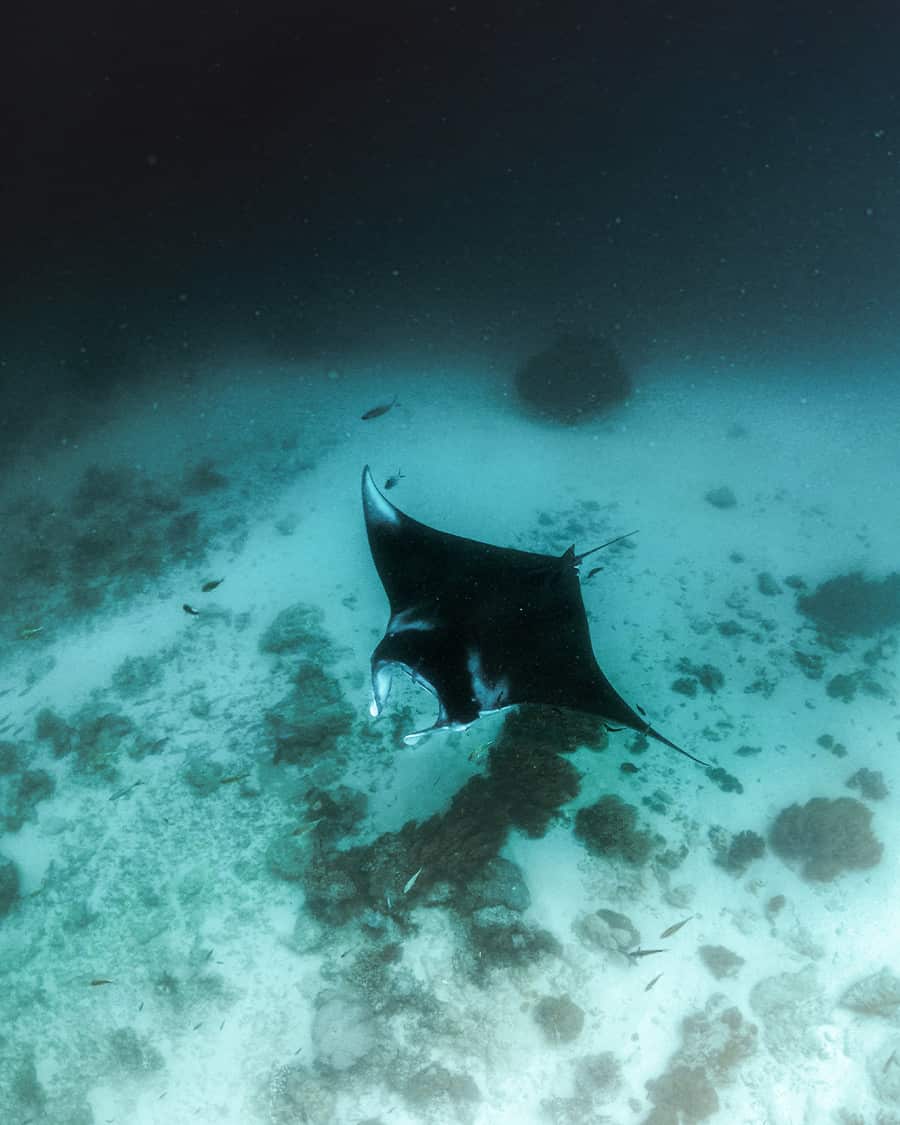
Five Wildlife Encounters on Aqua Blu to Make You Dream
Indonesia is characterized by an astonishing diversity of wildlife, over land and sea. Journey with us across the remote seas of the East Indonesian archipelago to come face-to-face with five incredible species that marks this region as a bucket list destination.
Birds of Paradise
While Raja Ampat‘s underwater life is impressive, our adventures on land include treks through mangrove-fringed bays and lush forests – home to the Birds of Paradise. During our itineraries, you will have the once-in-a-lifetime experience to embark on an early morning trek with our expert guides to spot the Red Birds of Paradise on Waigeo Island.
Described as “the most extraordinary and the most beautiful of the feathered inhabitants of the earth” by British research naturalist Alfred Russel Wallace in his 1869 book Malay Archipelago, Birds of Paradise are found across the Spice Islands of East Indonesia, to New Guinea and all the way in some areas in eastern Australia. Their large diversity in size, shapes and coloration are reflected in the 39 species encountered in these areas as a result of more than 20 million years of evolution.
The Red Bird of Paradise Wilson’s Bird of Paradise
Image: Leone Lemmer Image: William T. Cooper
© Research Library © William T. Cooper
Male members of the Paradisaeidae family sport strikingly beautiful plumage that has evolved beyond basic feathers, to include bright colours, long tail streamers, wires and unusual ornaments such as head fans and spreading breast shields. What is most outstanding is that only males have developed these unique traits with the sole purpose of appealing to females. A spectacle on its own, male Birds of Paradise put on a courtship dance performance, from setting the environment by picking up the leaves from their dance space, to ritual-like movements showcasing their most attractive features.
These range from dark orange-yellow head, erectile horn-like structure above each eye, dark green chin, striking deep crimson flank plumes, and curled, black central pair of tail ‘tapes’ for the Wilson’s family and the blue crown, bright yellow and crimson mantles and wings, iridescent green underparts, blue legs and feet, and glossy, sicle-shaped central tail feathers of the Red Birds of Paradise.
Pygmy Sea Horse
The smallest seahorse in the world, the intriguing pygmy sea horses are so tiny they measure under 2cm in height. Native to the Coral Triangle – an area with the highest number of coral reefs in the world and epicenter of marine biodiversity – this unusual but fascinating species is known for being camouflage masters, as they match the color and shape of the gorgonian coral they live in. As with sea horses, their breeding process is characterized by the male carrying the eggs to term in their brood pouch, where fertilization occurs.
Although it can be challenging to spot them, our Indonesia cruise guests – with the help of a magnifying glass, our expert guides, and determination – can find them during our Komodo National Park and Raja Ampat diving excursions.
The unusual but fascinating pygmy sea horse is fairly new to us. The first species, Hippocampus bargibanti, was discovered accidentally in 1969 by marine biologist Georges Bargibant while he was studying Muricella gorgonian sea fans. They are found over a large geographic range living in the gorgonian corals of Indonesia, Japan, New Caledonia, Papua New Guinea, the Philippines, and Australia. There are now at least seven known species and likely more to be discovered.
Due to the lack of information about their population size and trends, they are currently categorized as data deficient on the IUCN Red List. However, the destruction of their habitat through indiscriminate fishing practices, pollution, coral reef degradation, and others, poses a significant threat to this species.
Komodo Dragons
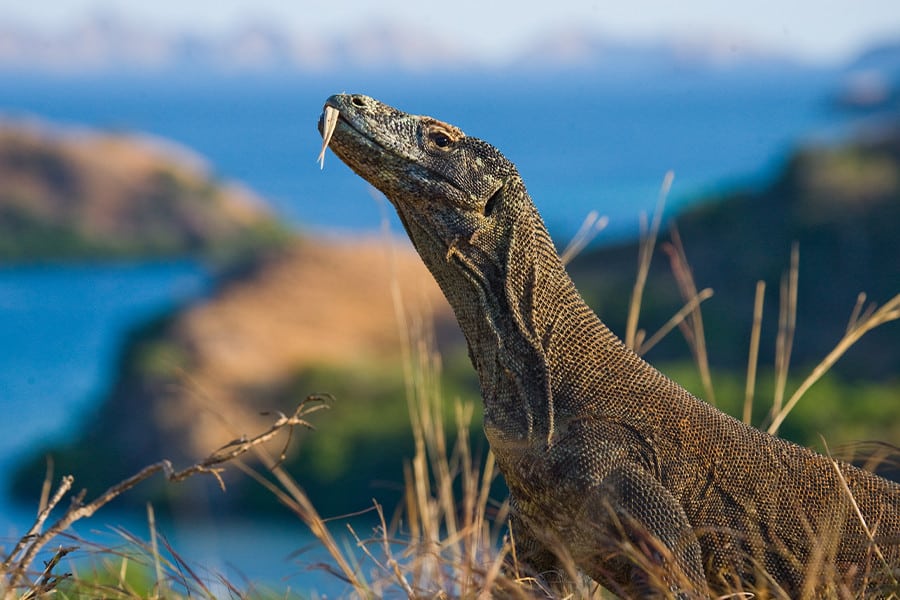
Ancient and rare Komodo Dragons (Varanus komodoensis) have thrived in the harsh climate of Indonesia’s Lesser Sunda Islands for millions of years. Approximately reaching 3 meters in length and weighing over 70kg, the Komodo Dragon is the world’s largest lizard and reptile, with an average length of 2-3 meters. The dragons are identified by their massive size, flat heads, bowed legs, long thick tails, and fork-shaped tongues.
Spotting one of these beasts in their eponymous homeland is a bucket-list experience for many nature enthusiasts. Our expert guides will lead you through the scenic landscapes of Komodo National Park to get up close (but not too close) to these prehistoric beasts for an experience you’ll never forget.
Because the locals don’t eat the ubiquitous Timor pigs – the dragons’ main food source (alongside deer and water buffalo) – the reptiles have been left to flourish. A hunting ban enforced by the Indonesian government in 1915 may also have had something to do with the reptile’s long-term survival. According to scientists, this particular species has managed to survive for millions of years, making it one of the oldest species that still exists today.
Komodo Dragons can only be found on five islands in the whole world, four of which are part of the Komodo Islands National Park, plus the nearby Flores Island in East Nusa Tenggara. There is a stable population of Komodo dragons on the islands of Komodo, Gila Motang, Rinca, and Flores. However, a dearth of egg-laying females, poaching, human encroachment, and natural disasters have threatened the species’ population. WWF and Conservation International have recognized the Komodo Islands as a global conservation priority area for these creatures.
Manta Rays
While the majestic manta rays are gentle and charismatic creatures, they are also known to be very smart! It’s no wonder, since they have the largest brain of any fish, which is reflected in their unique abilities for social interaction and communication. Although not scientifically proven, their behavior in mirror tests suggests that giant manta rays have a certain degree of self-awareness, only present in a limited list of animals that includes chimpanzees, elephants, and dolphins. As with whale sharks, mantas too are filter feeders, consuming krill and zooplankton. Their techniques can be quite remarkable, which includes a social form of feeding in which they gather and swim in circles, creating their own current in a spiral movement to pull food into their wide-open mouths.
In 2009, scientists discovered that there are at least two distinct species of mantas, the reef manta (Mobula alfredi) and the giant oceanic manta (Mobula birostris). They differ in size (reef mantas can grow up to four meters, while ocean mantas reach up to seven meters), amongst other differences in behavior and coloration. Although it is not common to see them together, Raja Ampat is home to both sub-species of manta. If you’re lucky, you might even be graced with their beauty on one of our expeditions, making their rare encounters with divers a truly exceptional experience.
The more common type of reef manta is the chevron colour morph, which sports a dark dorsal surface with a chevron markings and a white underneath with a pattern of black spots and marks. This pattern of black marks is unique to each individual, like our fingerprints and can be used to identify individuals through photographs. White shoulder markings curving down towards the middle of the back and the chevron V at the base of the dorsal fin is also another significant way to tell reef mantas from oceanic mantas. The giant manta on the other hand, has a distinct ‘T’ made of white shoulder markings that do not curve towards the middle of the back. They are easy to differentiate from reef mantas as they feature a small characteristic spine bump near the base of their tails and do not have spot markings on their undersides.
You can adopt a manta ray via The Manta Trust, an organization we work with closely to conserve the beauty of these majestic creatures.
Whale Sharks
Whale shark encounters in Komodo National Park are rare and truly one of life’s greatest adventures. They can be found in tropical seas around the world, but it is not know where pupping occurs or where the young situate.These beautiful creatures are characterized by their distinctive body coloration and pattern of white spots and lines. In fact, patterns are unique to each individual acting as an identification mechanism.
Whale Sharks (Rhincodon typus) can measure up to 20 meters long and weigh over 19,000 kilograms, making them the largest fish to exist. Tracking studies have found them to be migratory, traveling extensive distances across the ocean’s vast seas, with the longest recorded journey to be more than 20,000 km. These gentle giants are docile, but this makes them vulnerable as they continue to be hunted in parts of Asia for their fins, cartilage, meat and teeth.
Their numbers have dropped by more than half in the past 75 years according to the International Union for Conservation of Nature, but there is still the hope that researchers may learn more about these creatures although their deep sea dives of up to 2 kilometres can make them difficult to follow. They have been listed on the endangered species list since 2016.
Whale sharks are also known by their large mouths that contain more than 300 rows of individual small teeth, which they use to filter feed. While their size can be intimidating, whale sharks do not present a risk to humans as they feed exclusively of plankton, krill, small fish and fish eggs. They can be found swimming and feeding near the surface of the ocean, a dreamlike moment we were lucky enough to be part of and capture on film (above)!
Plan ahead and add an Aqua Blu expedition on your bucket list!




